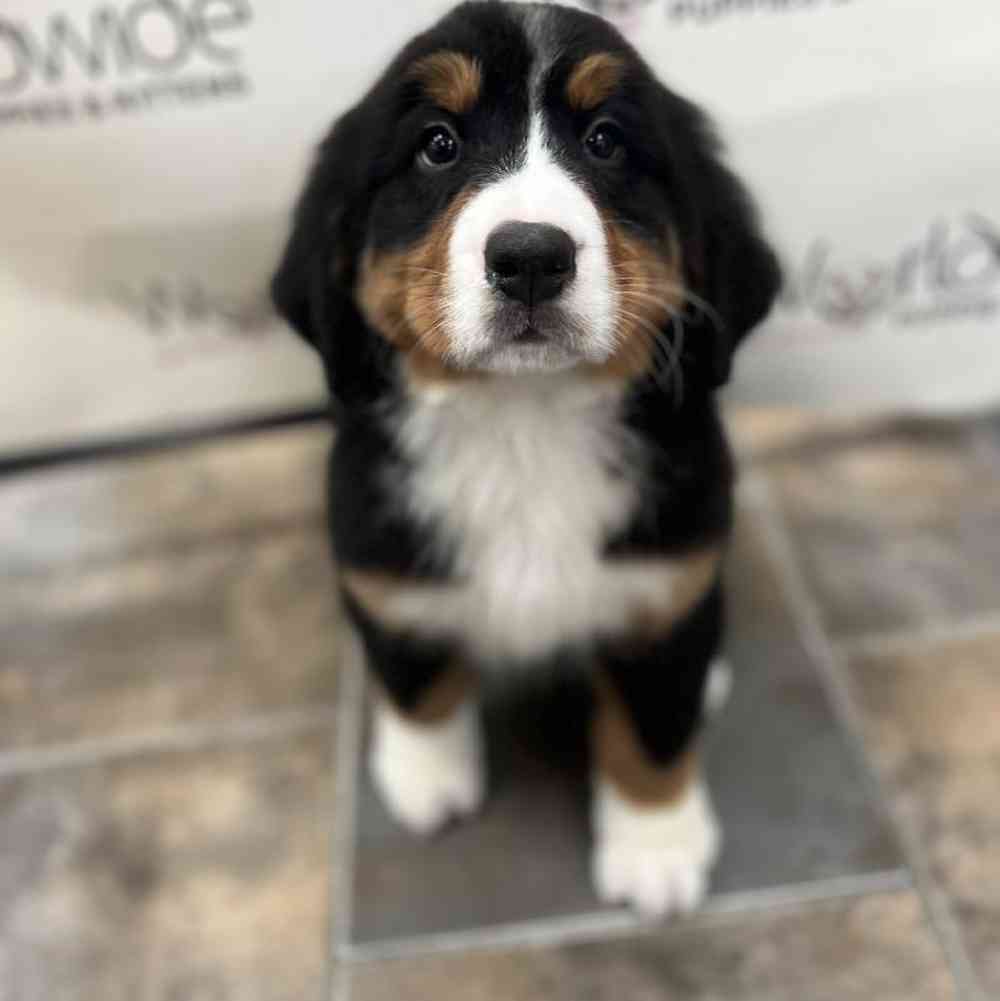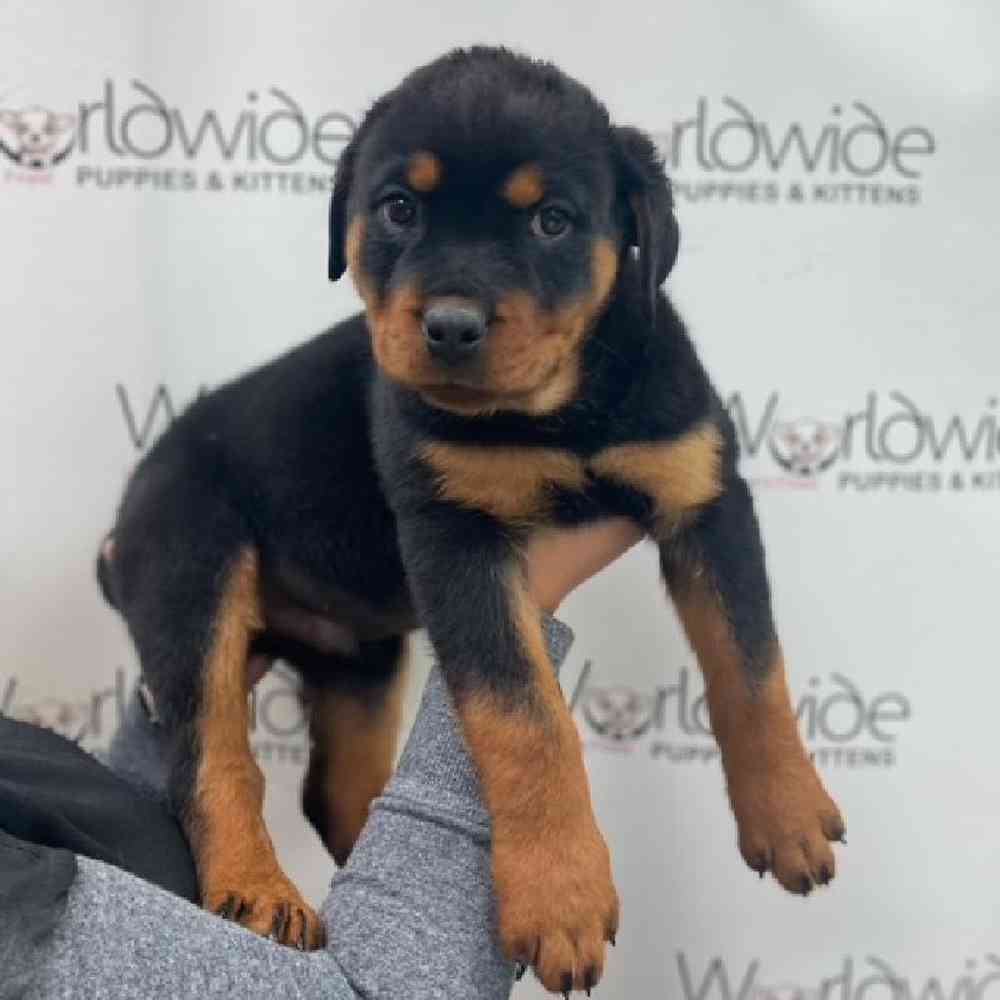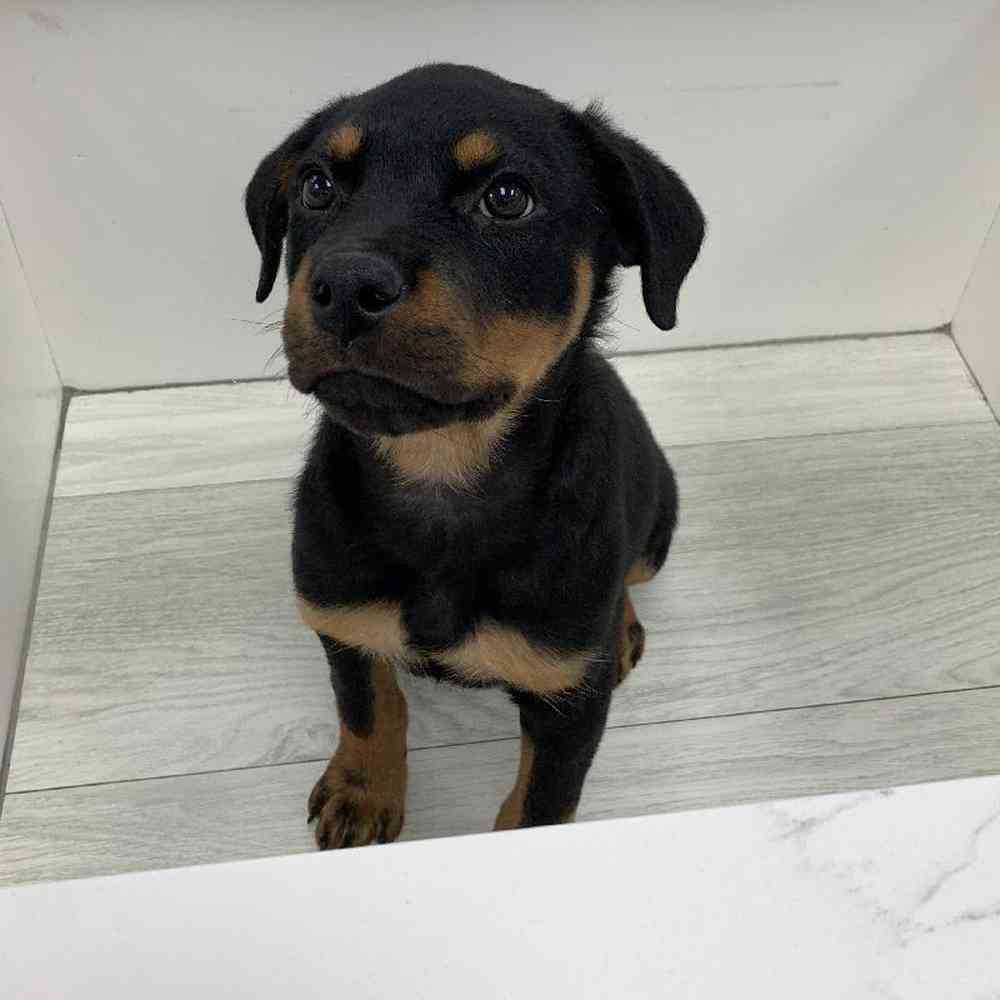
Family Dog
Guard Dog
AKC Registrable
Great Dane
The easygoing Great Dane, the mighty “Apollo of Dogs,” is a total joy to live with—but owning a dog of such imposing size, weight, and strength is a commitment not to be entered into lightly. This breed is indeed great, but not a Dane. Puppies for sale in Long Island, New York.
Available Puppies
Puppy Knowledge
Breed Info
Clubs, Registries & Associations
American Canine Association Continental Kennel Club Universal Kennel Club International American Kennel Club United All Breed Registry America's Pet Registry, Inc. United Kennel Club (Based on breed recognition. See store for details on this particular puppy.)
Interesting To Know
The Great Dane is the state dog of Pennsylvania Scooby-Doo the cartoon dog was based on a Great Dane Known as the "gentle giant" and the "king of dogs" and the "Apollo of dogs"
Group
Working
Heritage
The Great Dane is an ancient breed, depicted in Egyptian art dating back to 3000 BC. It is thought that the crossing of a Wolfhound and Old English Mastiff in the 5th century led to a cross with the Greyhound, creating today’s Great Dane. This hunting breed was also used a guard dog for aristocratic estates. A wonderful companion dog, today this breed’s skills include carting, watch dog and tracking dog.
Description
Huge, 28-34” at the shoulders, weighing anywhere from 100-200 pounds. The Great Dane has a massive, well-built, muscular body with a short and thick coat that comes in colors of brindle, harlequin, fawn, black, blue, merle and chocolate.
Health Awareness
The Great Dane Dog has a life expectancy of 8-10 years and is prone to bloat, hip dysplasia, heart disease, tumors and tail injuries.
Personality
The Great Dane loves people. They are affectionate, gentle, docile, playful, great watch dogs and loyal to the family. They are neither difficult nor easy to train, but do require consistent and committed leadership using only humane motivational techniques. Your Great Dane will be a big dog and needs to be taught good manners when a puppy so he or she learns how to safely interact with people. One jump can result in a tumble for an unsuspecting person.
Additional Information
Grooming Requirements: Requires regular brushing and bathing Coat: Short and thick Shedding: Average Shedding Hypoallergenic: No, due to shedding Apartment Living: Good for apartment living if given sufficient exercise Lap Dog: No Good With Children: Good with all children when well socialized at an early age. Good With Other Pets: Generally good with other pets when well socialized at an early age; this breed can become dog aggressive.
Breed Standard
General Appearance
The Great Dane combines, in its regal appearance, dignity, strength and elegance with great size and a powerful, well-formed, smoothly muscled body. It is one of the giant working breeds, but is unique in that its general conformation must be so well balanced that it never appears clumsy, and shall move with a long reach and powerful drive. It is always a unit-the Apollo of dogs. A Great Dane must be spirited, courageous, never timid; always friendly and dependable. This physical and mental combination is the characteristic which gives the Great Dane the majesty possessed by no other breed. It is particularly true of this breed that there is an impression of great masculinity in dogs, as compared to an impression of femininity in bitches. Lack of true Dane breed type, as defined in this standard, is a serious fault.
Size, Proportion, Substance
The male should appear more massive throughout than the bitch, with larger frame and heavier bone. In the ratio between length and height, the Great Dane should be square. In bitches, a somewhat longer body is permissible, providing she is well proportioned to her height. Coarseness or lack of substance are equally undesirable. The male shall not be less than 30 inches at the shoulders, but it is preferable that he be 32 inches or more, providing he is well proportioned to his height. The female shall not be less than 28 inches at the shoulders, but it is preferable that she be 30 inches or more, providing she is well proportioned to her height. Danes under minimum height must be disqualified.
Head
The head shall be rectangular, long, distinguished, expressive, finely chiseled, especially below the eyes. Seen from the side, the Dane’s forehead must be sharply set off from the bridge of the nose, (a strongly pronounced stop). The plane of the skull and the plane of the muzzle must be straight and parallel to one another. The skull plane under and to the inner point of the eye must slope without any bony protuberance in a smooth line to a full square jaw with a deep muzzle (fluttering lips are undesirable). The masculinity of the male is very pronounced in structural appearance of the head. The bitch’s head is more delicately formed. Seen from the top, the skull should have parallel sides and the bridge of the nose should be as broad as possible. The cheek muscles should not be prominent. The length from the tip of the nose to the center of the stop should be equal to the length from the center of the stop to the rear of the slightly developed occiput. The head should be angular from all sides and should have flat planes with dimensions in proportion to the size of the Dane. Whiskers may be trimmed or left natural. Eyes shall be medium size, deep set, and dark, with a lively intelligent expression. The eyelids are almond-shaped and relatively tight, with well developed brows. Haws and mongolian eyes are serious faults. In harlequins, the eyes should be dark; light colored eyes, eyes of different colors and walleyes are permitted but not desirable. Ears shall be high set, medium in size and of moderate thickness, folded forward close to the cheek. The top line of the folded ear should be level with the skull. If cropped, the ear length is in proportion to the size of the head and the ears are carried uniformly erect. Nose shall be black, except in the blue Dane, where it is a dark blue-black. A black spotted nose is permitted on the harlequin; a pink colored nose is not desirable. A split nose is a disqualification. Teeth shall be strong, well developed, clean and with full dentition. The incisors of the lower jaw touch very lightly the bottoms of the inner surface of the upper incisors (scissors bite). An undershot jaw is a very serious fault. Overshot or wry bites are serious faults. Even bites, misaligned or crowded incisors are minor faults.
Neck, Topline, Body
The neck shall be firm, high set, well arched, long and muscular. From the nape, it should gradually broaden and flow smoothly into the withers. The neck underline should be clean. Withers shall slope smoothly into a short level back with a broad loin. The chest shall be broad, deep and well muscled. The forechest should be well developed without a pronounced sternum. The brisket extends to the elbow, with well sprung ribs. The body underline should be tightly muscled with a well-defined tuck-up. The croup should be broad and very slightly sloping. The tail should be set high and smoothly into the croup, but not quite level with the back, a continuation of the spine. The tail should be broad at the base, tapering uniformly down to the hock joint. At rest, the tail should fall straight. When excited or running, it may curve slightly, but never above the level of the back. A ring or hooked tail is a serious fault. A docked tail is a disqualification.
Forequarters
The forequarters, viewed from the side, shall be strong and muscular. The shoulder blade must be strong and sloping, forming, as near as possible, a right angle in its articulation with the upper arm. A line from the upper tip of the shoulder to the back of the elbow joint should be perpendicular. The ligaments and muscles holding the shoulder blade to the rib cage must be well developed, firm and securely attached to prevent loose shoulders. The shoulder blade and the upper arm should be the same length. The elbow should be one-half the distance from the withers to the ground. The strong pasterns should slope slightly. The feet should be round and compact with well-arched toes, neither toeing in, toeing out, nor rolling to the inside or outside. The nails should be short, strong and as dark as possible, except that they may be lighter in harlequins. Dewclaws may or may not be removed.
Hindquarters
The hindquarters shall be strong, broad, muscular and well angulated, with well let down hocks. Seen from the rear, the hock joints appear to be perfectly straight, turned neither toward the inside nor toward the outside. The rear feet should be round and compact, with well-arched toes, neither toeing in nor out. The nails should be short, strong and as dark as possible, except they may be lighter in harlequins. Wolf claws are a serious fault.
Color and Markings
Brindle - The base color shall be yellow gold and always brindled with strong black cross stripes in a chevron pattern. A black mask is preferred. Black should appear on the eye rims and eyebrows, and may appear on the ears and tail tip. The more intensive the base color and the more distinct and even the brindling, the more preferred will be the color. Too much or too little brindling are equally undesirable. White markings at the chest and toes, black-fronted, dirty colored brindles are not desirable. Fawn - The color shall be yellow gold with a black mask. Black should appear on the eye rims and eyebrows, and may appear on the ears and tail tip. The deep yellow gold must always be given the preference. White markings at the chest and toes, black-fronted dirty colored fawns arenot desirable. Blue - The color shall be a pure steel blue. White markings at the chest and toes are not desirable. Black - The color shall be a glossy black. White markings at the chest and toes are not desirable. Harlequin - Base color shall be pure white with black torn patches irregularly and well distributed over the entire body; a pure white neck is preferred. Merle patches are normal. No patch should be so large that it appears to be a blanket. Eligible, but less desirable, are black hairs showing through the white base coat which give a salt and pepper or dirty appearance. Mantle - The color shall be black and white with a solid black blanket extending over the body; black skull with white muzzle; white blaze is optional; whole white collar is preferred; a white chest; white on part or whole of forelegs and hind legs; white tipped black tail. A small white marking in the blanket is acceptable, as is a break in the white collar. Any variance in color or markings as described above shall be faulted to the extent of the deviation. Any Great Dane which does not fall within the above color classifications must be disqualified.
Coat
The coat shall be short, thick and clean with a smooth glossy appearance.
Temperament
Friendly, Patient, Dependable
Disqualifications
Danes under minimum height. Split nose. Docked Tail. Any color other than those described under "Color, Markings and Patterns"
Overview
About
As tall as 32 inches at the shoulder, Danes tower over most other dogs—and when standing on their hind legs, they are taller than most people. These powerful giants are the picture of elegance and balance, with the smooth and easy stride of born noblemen. The coat comes in different colors and patterns, perhaps the best-known being the black-and-white patchwork pattern known as “harlequin.” Despite their sweet nature, Danes are alert home guardians. Just the sight of these gentle giants is usually enough to make intruders think twice. But those foolish enough to mistake the breed’s friendliness for softness will meet a powerful foe of true courage and spirit. Patient with kids, Danes are people pleasers who make friends easily.
History
No one is quite sure how or why Great Danes, a German breed, came to be associated with Denmark. (In Germany they’re known as the Deutsche Dog, or “German dog.”) We do know that once upon a time, German nobles used Danes to hunt ferocious wild boars. Later, Danes became famous as protectors of their home and loved ones, a job they are still happy to perform.
Standard
The Great Dane combines, in its regal appearance, dignity, strength and elegance with great size and a powerful, well-formed, smoothly muscled body. It is one of the giant working breeds, but is unique in that its general conformation must be so well balanced that it never appears clumsy, and shall move with a long reach and powerful drive. It is always a unit — the Apollo of dogs. A Great Dane must be spirited, courageous, never timid; always friendly and dependable. This physical and mental combination is the characteristic which gives the Great Dane the majesty possessed by no other breed.
Nutrition
Feed the Great Dane a high-quality dog food appropriate to the dog’s age (puppy, adult, or senior). Give table scraps sparingly, if at all, especially avoiding cooked bones and foods with high fat content. Learn about which human foods are safe for dogs, and which are not. Owners must be aware that the number-one killer of the breed is bloat, where the stomach distends and twists. The causes of bloat aren’t fully understood, but experts agree that multiple small meals per day and preventing vigorous exercise around mealtimes can help reduce the chances of it happening.
Grooming
For most of the year the Great Dane’s short, smooth coat doesn’t shed much, but given the size of the dog, this can still amount to a fair bit of hair. Weekly brushing with a medium-bristle brush, a rubber grooming mitt or tool, or a hound glove will help keep shedding to a minimum. During shedding season once or twice a year, however, hair loss will be more profuse, with a daily brushing ideal. Great Danes need a bath only occasionally, unless they get into something messy. As with all breeds, the Great Dane’s nails should be trimmed regularly, because overly long nails can cause the dog pain as well as problems walking and running.
Exercise
Great Danes may seem sedate, but they require daily exercise appropriate to their age. A brisk walk two or three times a day can be enough. They can make good companions on jogs or hikes, but you must wait until the dog is 2 years old to avoid damage to growing joints. Because of the risk of bloat, avoid rigorous exercise around mealtimes. Danes tend to follow their nose wherever a scent takes them, so they should always be kept on a leash and only allowed loose in areas secured with a tall fence. Many Great Danes enjoy participating in agility, obedience, tracking events, weight pulls, and sports such as flyball.
Training
Early socialization and puppy training classes are recommended. For a breed as large and powerful as the Great Dane, obedience training is a must. Socialization—gently exposing the puppy to a wide variety of people, places, and situations—will help him develop into a well-adjusted adult. Great Danes are sociable, friendly, and eager to please, and they respond well to firm, consistent training methods. They need to have human contact, affection, and socialization with other people and animals.
Health
Bloat, or gastric dilatation-volvulus (GDV), is the number-one killer of Danes. Owners should educate themselves to recognize the signs that bloat could be happening and what to do if so. Many breeders and owners consider a surgery called a prophylactic gastropexy (“preventative tack”) that can help prevent some of the more serious aspects of GDV. Other health issues that can affect the breed include eye and cardiac diseases, hypothyroidism and autoimmune thyroiditis, and hip dysplasia. A responsible breeder will screenbreeding stock for conditions that can affect the breed.






